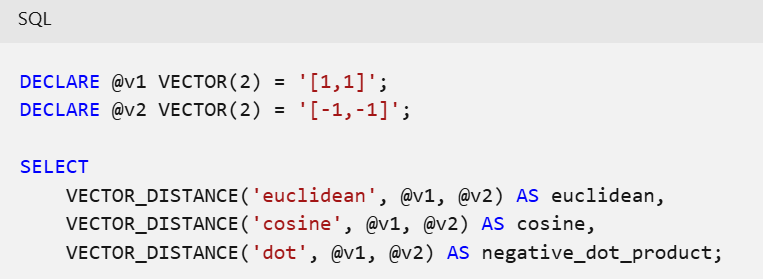Microsoft recently launched a public preview of native vector support for the Azure SQL Database. With this update, the database can now store and process vector embeddings directly within it.
Earlier, the support native vector support for the Azure SQL Database was in early adopter preview as the company sees the integration of vector search within RDBMS as a means for customers to perform vector similarity searches alongside traditional SQL queries, enhancing data analysis and decision-making.
Vector embeddings, representing complex data types such as text, images, and audio, are essential for modern AI applications. By adding native support, Azure SQL Database removes the need for separate vector databases, simplifying the development process for data teams and providing a unified data management solution.
The introduction of a new data type, VECTOR, allows databases to store, search, and analyze vector data in a structured format. This addition is further complemented by the VECTOR_DISTANCE function, which computes the similarity between vectors—a fundamental operation in AI tasks like semantic search, which ranks results based on meaning rather than just keywords. This function enables efficient handling of vector similarity, allowing applications to deliver more relevant and contextually aware responses.

(Source: Azure SQL Devs’ Corner blog post)
Native vector support offers significant performance benefits over external vector databases by eliminating the need for data movement between platforms. This reduces latency in operations and minimizes the complexities associated with managing and integrating multiple databases. Since vector data is natively managed within Azure SQL Database, developers can leverage existing SQL expertise to handle complex AI tasks without mastering new, specialized systems.
Including vector support directly within Azure SQL Database enables numerous industry applications. For instance, e-commerce companies can create recommendation engines that suggest products based on customer preferences, leveraging vector similarity for product matching. Similarly, healthcare providers can deploy advanced diagnostic tools that analyze patient records and medical data to identify patterns indicative of specific health conditions, using vector embeddings to improve prediction accuracy.
In a Medium blog post, Juan C Olamendy, an AI-preneur writes:
In the realm of recommendation systems, vector databases play a pivotal role in efficiently storing and retrieving high-dimensional vectors.
He mentions Vector databases like Pinecone, Milvus, Qdrant, and Weaviate while discussing VectorDB and RecSys in depth.
Another anticipated use is in real-time semantic search. By processing natural language embeddings, businesses can develop search systems that understand the context of queries, improving the user experience by delivering more meaningful results. This functionality is especially relevant to industries such as media, where semantic search can enhance content discovery and engagement.
Lastly, Microsoft has facilitated seamless integration with popular AI frameworks, including LangChain and Semantic Kernel. These integrations allow developers to extend vector processing capabilities within Azure SQL Database to their existing AI workflows, making adopting this technology more straightforward and accessible. Furthermore, a repo is available containing samples that are meant to help use the new Native Vector Support in the Azure SQL DB feature.